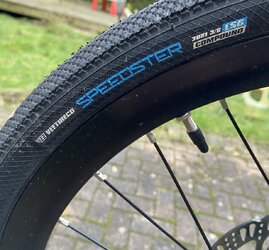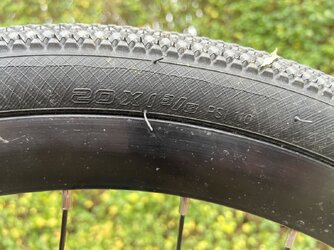Just photoing the tyres on my folder to buy the right size tubes and noticed these "cracks" going most of the way round the tyre, both sides. Bike is a Carrera Intercity Disc 9 from Halfords.
Bike (and hence tyre) is 6 months old, less than 50 miles on it. It's not been ridden off road or hard, it's been stored in my garage the whole time. The tyres have never been off the rims and have always been inflated. I just pumped them up the other day (to about 90) as the pressure had dropped a bit. They're rated to 110 psi but to my knowledge have never been pumped above 100.
Is this something to be concerned about?
Bike (and hence tyre) is 6 months old, less than 50 miles on it. It's not been ridden off road or hard, it's been stored in my garage the whole time. The tyres have never been off the rims and have always been inflated. I just pumped them up the other day (to about 90) as the pressure had dropped a bit. They're rated to 110 psi but to my knowledge have never been pumped above 100.
Is this something to be concerned about?




